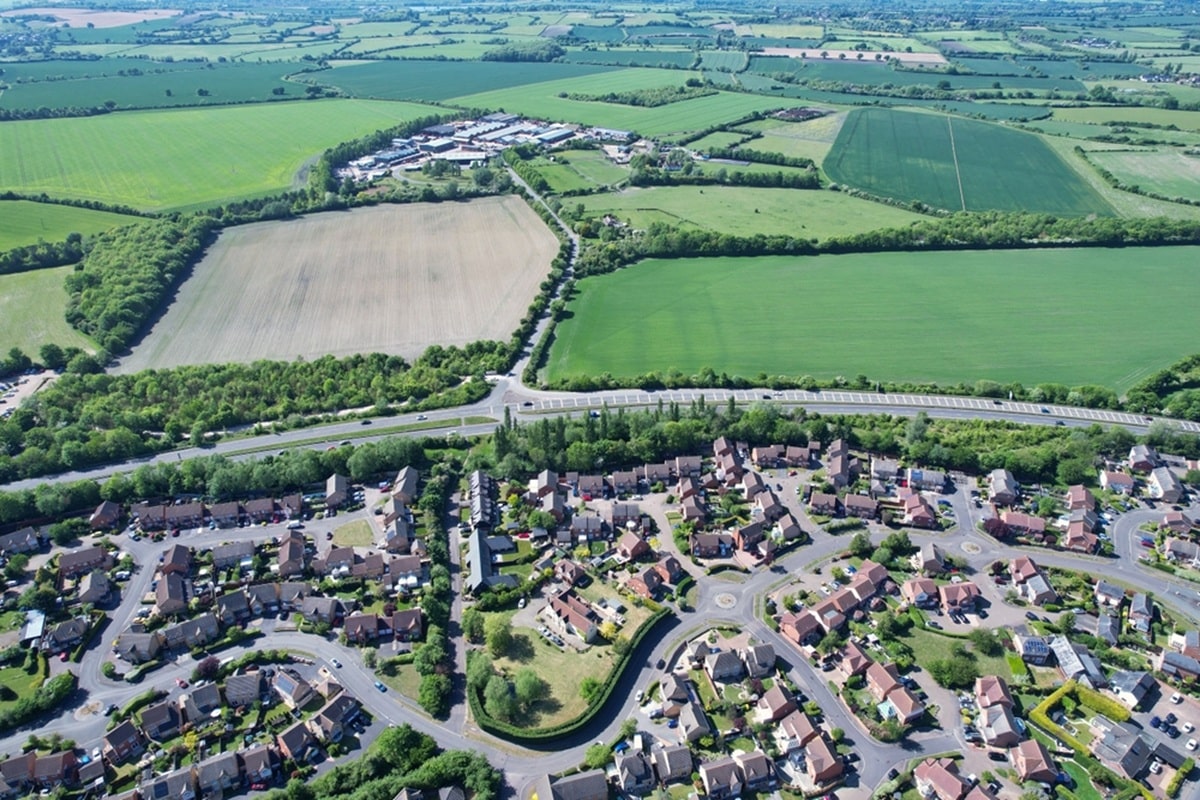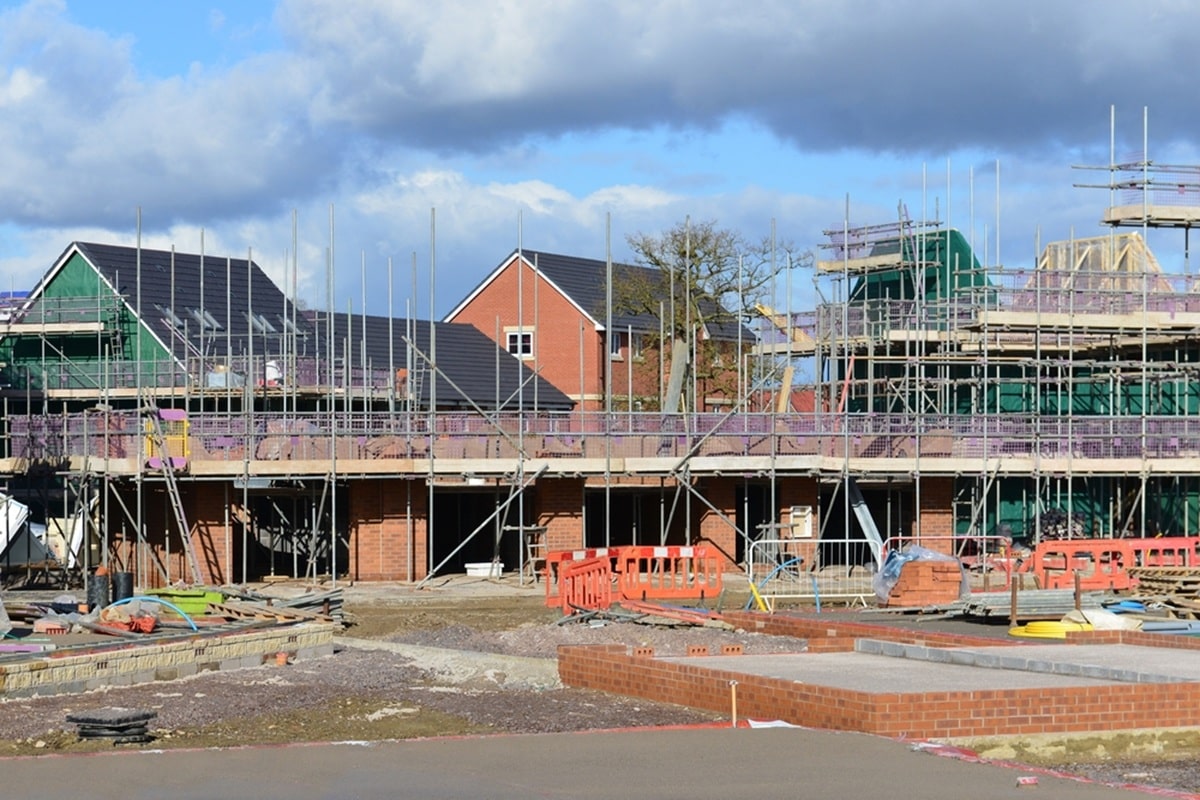
The government’s new Planning and Infrastructure Bill has been sold as a vital tool to unlock development, promising to fast-track housebuilding and deliver 1.5 million new homes.
As an experienced and knowledgeable ecology consultancy, we understand the pressure to increase housing stock: we work with developers every day to be an `enabler’ in the planning process. We are absolutely committed to that goal.
But we want to be clear and direct with you: the government’s depiction of the Bill as a `win-win’ for both housing and the environment is a dangerous illusion. Behind the rhetoric of speed, we see a deeply flawed plan to dismantle long-standing safeguards for species and habitats, replacing them with a toxic “pay-to-pollute” system.
Britain is already one of the most nature-depleted countries on Earth, and this Bill risks accelerating ecological decline at the worst possible moment. We believe there’s a much smarter, safer way to plan the future: one that respects both the need for homes and the value of our wildlife.
The Alarming Truth: A “Licence to Destroy” Local Nature
The most controversial element of the Bill is the establishment of the Nature Restoration Fund (NRF), paired with regional Environmental Delivery Plans (EDPs).
EDPs are area-based, 10-year plans to set out priorities for environmental and nature recovery in regions. If an EDP applies, some developments might discharge certain environmental obligations by contributing to the EDP, rather than carrying out all mitigation on site.
The Nature Restoration Fund has been set up as a repository into which developers may pay to fund those EDP obligations and bypass their on-site obligations. This means a developer could destroy irreplaceable local habitats and species, contributing money to a vague, unspecified restoration project somewhere else.
This system effectively reverses the established mitigation hierarchy – the bedrock principle of ecology. The hierarchy dictates that you must: 1. Avoid harming nature first, 2. Mitigate any unavoidable harm on-site, and 3. Only as a last resort, compensate for residual damage.
Our CEO, Robert Oates, calls this what it is:
A licence to destroy local populations of bats, barn owls, reptiles, dormice, and countless other species.

Why “Offsetting” Fails Protected Species
This “cash to trash” mechanism is deeply flawed because it fails to distinguish between different types of environmental problems. Combining measures through centralised funding could work to address strategic challenges like nutrient pollution. The NRF could pool resources to upgrade sewage works or implement catchment-wide conservation, which is often the most effective way to solve these large-scale problems.
However, the combined measures approach is devastating when applied to legally protected species. Protected species are incredibly site-faithful. Bats return to the exact same maternity roosts every year, and barn owls rely on specific, long-term territories. Their survival depends on protecting that specific location, which cannot be compensated for by funding a project miles away or with promises of restoration years down the line.

Why Voters Oppose “Cash to Trash”
We are reliable and confident in our data, and our research confirms that this policy is not only ecologically disastrous but politically toxic. The British public is overwhelmingly opposed to this fundamental shift in planning.
Opposition is Widespread and Unified
Voters are staunchly opposed to the core concept of simply paying a fee to destroy nature.
- 73% of voters oppose allowing developers to avoid ecological mitigation by paying a levy.
- This opposition cuts across party lines. 77% of Conservative voters and 79% of Labour voters oppose the “cash to trash” concept.
The idea that the Bill is an easy `win-win’ is clearly not true; the public views it as a severe compromise of environmental principles.
The Importance of Local Nature Cannot be Overstated
Voters place a high, non-negotiable value on protecting nature in their own communities. Offsetting nature away from local areas is deemed unacceptable by most people.
- 70% of voters say that paying to mitigate damage somewhere else is unacceptable.
- When asked to choose, a majority would prioritise protecting existing local green spaces over compensating for the loss elsewhere – potentially miles away from the original site.
This data highlights the political risk that occurs when the government fails to protect nature at the local level. People expect us – and their leaders – to be reliable on protecting nature in their immediate area.
As it stands, the Bill could push most development into poorer, urban areas, while moving restoration projects elsewhere. This would widen inequalities in access to green space, harming health, community ties, and quality of life. With one in six species already at risk of extinction, treating nature as the same everywhere ignores both science and public opinion.
The Demographics of Dissent: Universal Opposition
Our polling of 9,269 adults across Great Britain shows the opposition is not confined to a single demographic but is universal.
- Age: Support for the existing protections (the mitigation hierarchy) is strong across all age groups, showing that this is not just a generational issue.
- Political Affiliation: Opposition to the Bill’s core concept is widespread, proving that the desire to protect local wildlife is one of the few issues that unites the electorate.
The message is unambiguous: the public will not sacrifice their local wildlife for the sake of speed.

The Economic Lie: Why Your Survey is Not the Problem
The whole rationale for dismantling the current system is the misleading assertion that existing ecological surveys create a “planning gridlock.”
We want to be straight to the point and provide specific facts on why this is wrong:
- Low Cost, High Value: A typical ecological assessment costs around £3,500. This is a negligible fraction of any development’s gross value.
- Negligible Economic Gain: Even under generous assumptions, the most optimistic estimate for the resulting GDP gain from eliminating these surveys is just 0.01%. This is one part in ten thousand! These marginal savings do not justify the massive legal and ecological risks of dismantling protections.
- The Real Barriers: The real constraints on housing delivery are structural: skilled labour shortages, high cost of capital, inflation, and market demand. More planning consents will not automatically translate into more housing completions.
Surveys Provide Essential Data
Getting rid of surveys means losing the essential baseline data the planning system needs. The government’s own impact assessment admits that data on environmental obligations is very limited, so why are they eliminating the tool that provides it?
Your site-specific ecological assessment provides three key functions:
- Fidelity: Without knowing what species are present, we cannot accurately design or price mitigation measures.
- Choice: Surveys allow you to select the most cost-effective and suitable mitigation solution.
- Evidence: The surveys contribute to the wider national dataset, helping us all make better policy decisions in the future.
Because Biodiversity Net Gain (BNG) is now mandatory for development projects, ecologists are often on your site anyway. Combining protected species surveys with BNG adds very little time or cost.

What This Bill Means for You: A Look at the Risks
The Bill is not law yet, but its draft components introduce risks for everyone involved in development:
For Individual Householders and Small Developers
You might be thinking this streamlined process sounds great. However, if your small project is in an EDP area, and you rely on the new system, you are taking a risk:
- Data Voids: A lack of initial baseline data could still cause your planning application to be refused or delayed by the Local Planning Authority because you haven’t proved that you can avoid harm to protected species.
- Uncertainty: You will be relying on regional plans that are still being developed. Early engagement with ecology surveys is still the most effective way to ensure a smooth, fast approval.
For Medium and Large Developers
This Bill will be more transformational, but it adds new layers of regulatory risk:
- NSIP Streamlining: While the streamlining of Nationally Significant Infrastructure Projects (NSIPs) will be beneficial for speed, the pressure to use the NRF/EDP route for protected species may increase scrutiny from environmental groups where projects affect priority habitats.
- The Cost of the Levy: The cost of the NRF contribution might be significant and built into the land value. Even if some mitigation can be off-site, the aggregate cost may be higher than targeted on-site measures.
- Loss of Survey Data: Despite the changes, large projects will still require comprehensive baseline ecological surveys. Losing or downgrading survey requirements risks the late discovery of a protected species, which leads to costly redesigns and major delays; the very thing the Bill is meant to prevent.

There is a Better Way: Our Experience-based Solutions
We believe reform is possible without sacrificing our wildlife. We are confident we can get homes built and protect nature. We have proposed concrete, knowledgeable alternatives to Parliament that would maintain protections while addressing real delays in the planning system.
- Combine Assessments: Let’s align assessments. We can easily combine BNG surveys, protected species surveys, and Environmental Outcomes Reports into a single, efficient process.
- Expand Private-Sector Capacity: Why not use the expert capacity we already have? Private ecologists like us should be accredited to support Natural England and local planning authorities in processing applications. This would reduce delays while retaining statutory oversight.
- Selective Levies: Use the Nature Restoration Levy for what it’s good for: strategic, large-scale challenges like nutrient pollution and water scarcity. Do not extend it to protected species.
- Invest in Data: Let’s create a national “super-baseline” of ecological data by pooling planning records and consultancy datasets. This would underpin any reform with solid evidence.
The Bill’s Current Position in the Legislature and Timescale
- The Bill has passed through the House of Commons: first reading, second reading, then a Public Bill Committee where various amendments and new clauses were agreed.
- As at the beginning of October, the Bill has proceeded to the House of Lords and is in the report stage before the third reading and final stages.
- It is estimated that Royal Assent (when the Bill will become law), will happen in late 2025 or early 2026. Following Royal Assent, a period of secondary legislation is likely, involving regulations and guidance to implement many of its parts. Some components, especially environmental obligations such as Environmental Delivery Plans and the Nature Restoration Fund, may require more detailed implementing rules.
Our Final Thoughts: Why We Can’t Sacrifice Wildlife to Build Houses
This Bill had the potential to be a turning point for planning and nature. Instead, it creates loopholes large enough to drive bulldozers through, making it easy to exploit on an industrial scale.
If Parliament allows the Bill to proceed unamended, we risk:
- Local extinctions of protected species.
- Breaching our international biodiversity commitments.
- Losing public trust in planning reform, confirmed by our research data.
The choice before Parliament is stark: protect our wildlife and honour our ecological commitments, or trade them away for a negligible economic return and massive political risk. For the sake of species like bats, barn owls, and dormice, the right path is clear.



